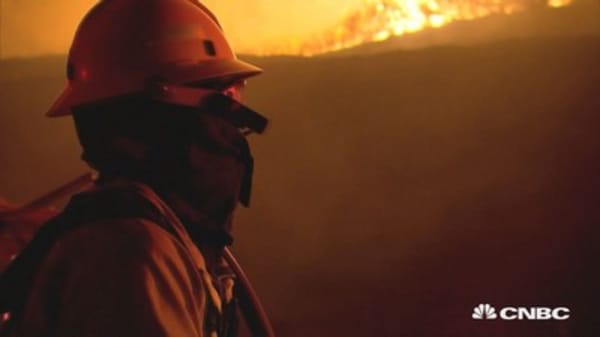Another part of the increase in costs is more homes in the line of danger.
According to a study by Headwaters Economics, 60 percent of homes that have been built since 1990 have been in the "wildland-urban interface," the areas where America's wild areas and residential areas meet, converting areas that could have safely burned into areas that need to be fiercely protected at a rate of about 4,000 acres a day.
Keeping those homes from burning accounts for between 30 percent and 95 percent of firefighting costs—depending on who you ask. And it's only going to get worse as we expand our living space into the backcountry.
By Sunday afternoon, the Butte fire, another Northern California blaze, had destroyed more than 100 buildings and threatened about 6,400 more, according to NBC News.
According to a 2015 report by CoreLogic, in the western U.S. alone there are now more than 897,000 residential properties in areas that are at high or very high risk for wildfires. If destroyed, those homes would cost $237 billion to rebuild.
The agencies laboring to protect more and more private homes from bigger and more severe fires are being consumed themselves by the costs. For the first time this year, more than half of the Forest Service's budget is for wildfires, far up from 16 percent in 1995, according a report released by the department in August. Non-fire employees have been cut by 39 percent over that time.
Not only have non-fire-related programs like watershed management, road improvement and other responsibilities tied to the National Forest System been pillaged for fire suppression funds, but in years when the fire suppression budget is inadequate, the Forest Service must transfer money from other programs to cover the costs. In some years, that shortfall has approached another $1 billion.
Sometimes that money comes from preventative efforts like clearing vegetation and proscriptive fires, which are designed to help control future fires. That's only going to make things worse in the future.
"The current method isn't working, and it's very disruptive," said Jones. "When we start depleting our firefighting funds, we have to go out to the field units and say stop spending—we take money away from wildlife projects and road projects and it hurts long-term efforts to reduce fire risks on the front end."









